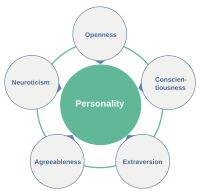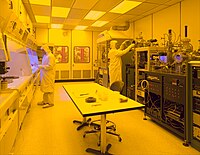
Performance comparison between batch and continuous mode of operation of microbial electrosynthesis for the production of organic chemicals
Sign Up to like & getrecommendations! Published in 2021 at "Journal of Applied Electrochemistry"
DOI: 10.1007/s10800-020-01524-y
Abstract: Abstract Microbial electrosynthesis (MES) is an innovative technology, which can yield valuable organic chemicals with concomitant CO 2 sequestration by employing microbes as biocatalysts. The mode of operation has an imperative role in the performance… read more here.
Keywords: mode; microbial electrosynthesis; performance; mode operation ... See more keywords

Spiking organic chemicals onto sediments for ecotoxicological analyses: an overview of methods and procedures
Sign Up to like & getrecommendations! Published in 2022 at "Environmental Science and Pollution Research"
DOI: 10.1007/s11356-022-18987-5
Abstract: Laboratory testing with spiked sediments with organic contaminants is a valuable tool for ecotoxicologists to study specific processes such as effects of known concentrations of toxicants, interactions of the toxicants with sediment and biota, and… read more here.
Keywords: sediments ecotoxicological; onto sediments; ecotoxicological analyses; chemicals onto ... See more keywords

Accelerated equilibrium sampling of hydrophobic organic chemicals in solid matrices: A proof of concept on how to reach equilibrium for PCBs within 1 day.
Sign Up to like & getrecommendations! Published in 2019 at "Chemosphere"
DOI: 10.1016/j.chemosphere.2019.124537
Abstract: Equilibrium sampling of hydrophobic organic chemicals (HOCs) is increasingly used to measure freely dissolved concentrations and chemical activities in sediments and soils. However, for the most hydrophobic chemicals (Log Kow > 6) such equilibrium sampling requires often… read more here.
Keywords: sampling hydrophobic; hydrophobic organic; organic chemicals; pcbs ... See more keywords

Development of models predicting biodegradation rate rating with multiple linear regression and support vector machine algorithms.
Sign Up to like & getrecommendations! Published in 2020 at "Chemosphere"
DOI: 10.1016/j.chemosphere.2020.126666
Abstract: Biodegradation is a significant process for removing organic chemicals from water, soil and sediment environments, and therefore biodegradability is critical to evaluate the environmental persistence of organic chemicals. In this study, based on a dataset… read more here.
Keywords: biodegradation rate; biodegradation; multiple linear; rate rating ... See more keywords

Development of bovine serum albumin-water partition coefficients predictive models for ionogenic organic chemicals based on chemical form adjusted descriptors.
Sign Up to like & getrecommendations! Published in 2017 at "Ecotoxicology and environmental safety"
DOI: 10.1016/j.ecoenv.2017.06.012
Abstract: The partition coefficients between bovine serum albumin (BSA) and water (KBSA/w) for ionogenic organic chemicals (IOCs) were different greatly from those of neutral organic chemicals (NOCs). For NOCs, several excellent models were developed to predict… read more here.
Keywords: adjusted descriptors; form adjusted; predictive models; chemical form ... See more keywords

Different factors determined the toxicokinetics of organic chemicals and nanomaterials exposure to zebrafish (Danio Rerio).
Sign Up to like & getrecommendations! Published in 2019 at "Ecotoxicology and environmental safety"
DOI: 10.1016/j.ecoenv.2019.109810
Abstract: Little is known about how the chemical properties (molecular structure, such as the hydrophobic and hydrophilic end group for organic chemical, and particle size for nanomaterials (NMs)) quantitatively affect the toxicokinetics (TK) in organisms especially… read more here.
Keywords: particle size; compartment; chemical; organic chemicals ... See more keywords

Engineering Research Progress of Electrochemical Microreaction Technology—A Novel Method for Electrosynthesis of Organic Chemicals
Sign Up to like & getrecommendations! Published in 2020 at "Engineering"
DOI: 10.1016/j.eng.2020.06.025
Abstract: Abstract Electrochemical methods are environmentally friendly and have unique advantages in the synthesis of organic chemicals. However, their implementation is limited due to the complex transport problems posed by traditional electrochemical reactors. Recently, the application… read more here.
Keywords: engineering; research; microreaction technology; electrosynthesis ... See more keywords

Ozonation products from trace organic chemicals in municipal wastewater and from metformin: peering through the keyhole with supercritical fluid chromatography-mass spectrometry.
Sign Up to like & getrecommendations! Published in 2021 at "Water research"
DOI: 10.1016/j.watres.2021.117024
Abstract: Ozonation is an important process to further reduce the trace organic chemicals (TrOCs) in treated municipal wastewater before discharge into surface waters, and is expected to form products that are more oxidized and more polar… read more here.
Keywords: chromatography; trace organic; ozonation; wastewater ... See more keywords

Mechanisms of pH-dependent uptake of ionizable organic chemicals by fish from oil sands process-affected water (OSPW).
Sign Up to like & getrecommendations! Published in 2020 at "Environmental science & technology"
DOI: 10.1021/acs.est.0c02522
Abstract: Uptake and effects of ionizable organic chemicals (IOCs) that are weak acids in aqueous solution by fish can differ as a function of pH. While the pH-dependent behavior of select IOCs is well-understood, complex mixtures… read more here.
Keywords: ospw; oil sands; ionizable organic; sands process ... See more keywords

Predicting Solute Descriptors for Organic Chemicals by a Deep Neural Network (DNN) Using Basic Chemical Structures and a Surrogate Metric.
Sign Up to like & getrecommendations! Published in 2022 at "Environmental science & technology"
DOI: 10.1021/acs.est.1c05398
Abstract: Solute descriptors have been widely used to model chemical transfer processes through poly-parameter linear free energy relationships (pp-LFERs); however, there are still substantial difficulties in obtaining these descriptors accurately and quickly for new organic chemicals.… read more here.
Keywords: surrogate metric; lfer descriptors; organic chemicals; dnn ... See more keywords

Classification and Regression Machine Learning Models for Predicting Aerobic Ready and Inherent Biodegradation of Organic Chemicals in Water.
Sign Up to like & getrecommendations! Published in 2022 at "Environmental science & technology"
DOI: 10.1021/acs.est.2c01764
Abstract: Machine learning (ML) is viewed as a promising tool for the prediction of aerobic biodegradation, one of the most important elimination pathways of organic chemicals from the environment. However, available models only have small datasets… read more here.
Keywords: regression; organic chemicals; classification; machine learning ... See more keywords